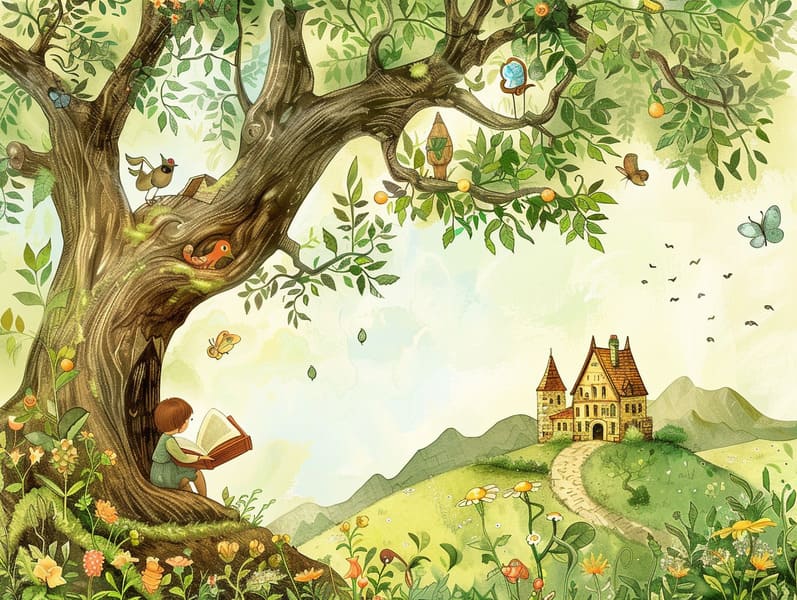The Rise of Legendary Fairy Tales with Their Invariable Mystique.
The Rise of Legendary Fairy Tales with Their Invariable Mystique.
Blog Article

Famous fairy tales have enduring presence. These narratives have been whispered from one generation to the next well before they were ever put on paper. They arose from a variety of backgrounds, including European traditions. They were initially narrated among adults, often carrying themes and messages aligned with the societal norms and beliefs of the time.
The Grimm brothers, Jacob and Wilhelm (the Grimm brothers), were among the first to collect and release many of these beloved tales. Their anthology, "Grimm's Children's Stories," included tales like "Cinderella," "The Story of Hansel and Gretel," and "Schneewittchen," which have since become essentials in the world of timeless fairy tales. Similarly, H. C. Andersen's fanciful tales, such as "The Mermaid's Tale," and "The Little Duckling," have stolen hearts worldwide, solidifying their place in the pantheon of iconic fairy tales.
Though they are centuries old, fairy tales remain as applicable as ever, especially as kids' bedtime tales. These whimsical stories are now available in multiple formats, including colorful picture books, captivating animations, and digital storybooks.
Their continued relevance can be ascribed to several fascinating points:
Valuable Lessons: Traditional fairy tales often offer important moral lessons. Narratives like "The Tale of the Boy Who Cried Wolf" teach the importance of sincerity, while "The Tortoise and the Hare" show the qualities of steadfastness and modesty. These tales offer children clear distinctions between correct and incorrect, molding their moral compass in a kind yet important way.
Compassion and Insight: Old fairy tales frequently showcase personalities facing challenges and problems, urging kids to resonate with their struggles and cheer for their triumphs. For instance, "Beauty and the Beast" teaches us the significance of looking beyond appearances to comprehend the inner spirit of a being, nurturing empathy and knowledge.
Cultural Appreciation: Many timeless fairy tales are steeped in the cultural contexts from which they originated. Exploring these stories can provide informative snapshots into different historical contexts, strengthening a sense of global appreciation and recognition.
Imagination and Innovation: The fanciful elements in old fairy tales—magical spells—stimulate children’s visions and dreams. These narratives move readers to imaginary realms, fostering fantastical thinking and a sense of curiosity that endures a lifetime.
Traditional fairy tales are not only fascinating but also teaching. They act as bewitching tools in advancing various mind and heart abilities in the young. When timeless fairy tales are spoken, they foster language development by bringing new linguistic elements and detailed sentence structures. This practice also advances listening skills and concentration, as young readers remain attentive, looking forward to see what happens next.
Furthermore, conversing about the themes and characters of fairy tales can advance evaluative skills and problem-solving abilities. Kids are educated to pinpoint patterns, anticipate outcomes, and make sense of cause and effect. These deliberations also assist the young reveal their thoughts and feelings, boosting their emotional intelligence.
In today’s technological era, the presence of internet fairy tales has made these narratives more accessible than ever. Internet resources and mobile apps extend ample collections of ancient fairy tales that can be browsed or listened to anytime, anywhere. Fairy tales recited are particularly common, offering an captivating way for little ones to savor these bewitching tales. Read-aloud books and read-out-loud stories guide characters and settings to life, often enhanced by delightful musical scores and melodies that elevate the tale journey.
The persistent attraction of traditional fairy tales lies in their ability to modify to new eras while preserving their core messages. Contemporary takes of these narratives often incorporate more varied protagonists and modern settings, making them meaningful to today’s audience. However, the main ideas of boldness, kindness, and righteousness remain unchanged, continuing to appeal to kids of all ages.
Old fairy tales also offer a sense of solace and closeness. They render a ordered narrative with a plain beginning, middle, and end, often winding up with the conclusion of conflicts and the triumph of good over evil. This constancy can be encouraging for kids, giving a sense of sturdiness in an constantly changing world.
Traditional fairy tales continue to allure and educate new generations, maintaining their fascination and applicability in modern society. As nighttime stories for kids, they offer a perfect blend of enchantment and education, backing moral values, empathy, and creativity. The abundance of online fairy tales and the widespread nature of fairy tales read aloud certify that these classic tales remain reachable to new generations.
By defending and relating these tales, we continue to revere the rich tapestry of cultural legacy and cultural heritage. Whether you are seeing a colorful picture book, enjoying a web collection, or listening through an read-aloud story, the splendor of timeless fairy tales is always within reach. These narratives emphasize of the undying essence of fairy tales and its ability to unite us across epochs and places.
No matter if you are viewing a vibrantly this site illustrated book, delving into a electronic collection, or listening via an read-aloud story, the radiance of classic fairy tales is always within reach.
These stories convey of the immortal effect of tales and its ability to tie us across time and space, forming a connection that fascinates and enlightens alike.